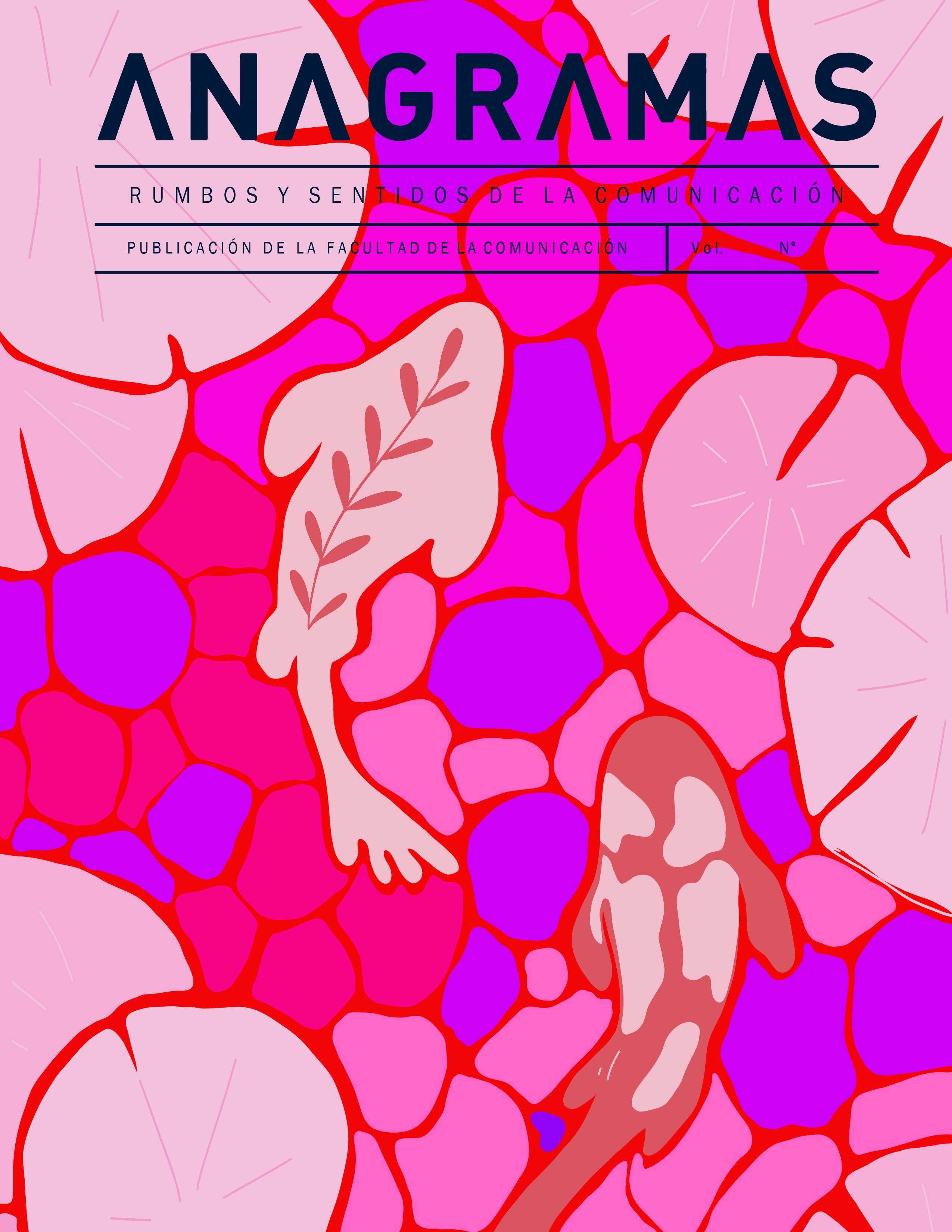Counterhegemonic discourse in La langosta azul (The Blue Lobster) (1954). Ideological and glottopolitical analysis of El gringo’s representation
Main Article Content
Abstract
This article focuses on the ideological dimension of the visual discourse of the character “El gringo” in La Langosta azul, a Colombian short film. It establishes how this dimension undergoes an inversion that accounts for elements with current characteristics. Thus, it responds to the need to analyze a filmic text of yesteryear, partially obscured in a national spectrum, but pioneering in terms of Colombian film productions throughout the twentieth and twenty-first centuries. To do so, we start from a semiodiscursive grammatical review. It is methodologically arranged from the linear fragmentation of a filmic text and visuality discrete elements composed by a pertinent semiotic language that associates a plane of expression and a plane of content. The ideological and glottopolitical dimensions of the examined visual discourse are also considered a sign of the strong cohesion between these disciplines. This analysis is contrasted with the historical, political, and social discourse of the time when the film was shot and which corresponds to a presupposed enunciation, and the prevailing ideology of “Grupo de Barranquilla”, from which past and present hegemonic factors, emanate, regarding the links between Colombia and the United States. This study concludes that a glottopolitical perspective of analyzed samples allows us to understand its inverse political character from a foreigner’s disruptive image to the emergence of new relational possibilities of power from discourses of resistance.
Article Details
References
Barrero Bernal, L. M. (2018). La experimentación formal del Grupo de Barranquilla anterior al imaginario de Macondo. Revista de Humanidades, (37), 63–82. https://www.redalyc.org/articulo.oa?id=321260060004
Bertrand, D., & Stange, V. (2017). Transversalité du sens et relations interartistiques: l’héritage greimassien. Semiotica, 2017(219), 315–333. https://doi.org/10.1515/sem-2017-0070
Block, B. (2008). Narrativa visual: creación de estructuras visuales para cine, vídeo y medios digitales. 2.ª ed. Barcelona: Omega.
Casetti, F., & di Chio, F. (1991). Cómo analizar un film. Barcelona: Paidós.
Cepeda Samudio, A., Grau Araújo, E., Vicens, L., & García Márquez, G. (Directores). (1954). La langosta azul [Cortometraje]. Los Nueve–Seis–Tres.
Colón Rodríguez, L. M. (2015). El lenguaje cinematográfico en la literatura de Juan José Saer y Antonio Di Benedetto: los casos de “Declinación y Ángel” y “Sombras sobre vidrio esmerilado”. Confluenze. Rivista di Studi Iberoamericani, 7(1), 213–224. https://doi.org/10.6092/issn.2036-0967/5398
De Arnoux, E. N., & Del Valle, J. (2010). Las representaciones ideológicas del lenguaje: discurso glotopolítico y panhispanismo. Spanish in Context, 7(1), 1–24. https://doi.org/10.1075/sic.7.1.01nar
Fontanille, J., & Zinna, A. (2019). Le dialogue entre la sémiotique structurale et les sciences. Hommage à Algirdas Julien Greimas. Langages, (213), 5–16. https://doi.org/10.3917/lang.213.0005
Fontanille, J. (2019). Des conflits de formes de vie chez Idrissa Ouédraogo. Des passions du corps comme médiation et transgression. Versus, Quaderni di studi semiotici 1/2019, 9–36. https://www.rivisteweb.it/doi/10.14649/94097
Foucault, M. (1988). El sujeto y el poder. Revista Mexicana de Sociología, 50(3), 3–20. https://www.jstor.org/stable/i282439
Gilard, J. (2005). Zone Bananière de Santa Marta: les planteurs de l’or vert. Caravelle (85), 95–114. https://www.persee.fr/doc/carav_1147-6753_2005_num_85_1_2903
Gilard, J. (2009). El grupo de Barranquilla y el cuento: Cepeda Samudio, el experimentador. En Plumas y pinceles. La experiencia artística y literaria del Grupo de Barranquilla en el Caribe colombiano al promediar del siglo XX. Bergamo University Press.
Gómez, E. (1988/2019). La langosta azul: el ángel cepediano en el cine. En Caminos divergentes: una mirada alternativa a la obra de Gabo. Ediciones Universidad Central.
Groupe µ. (1993). Tratado del signo visual. Madrid: Cátedra.
Hamon, P. (1990). Texto e ideología: para una poética de la norma. Revista Criterios, La Habana, (25–28), 66–94. https://biblat.unam.mx/es/revista/criterios-la-habana/3
Klinkenberg, J. (2015). The impact of an embodied theory of meaning on the epistemology of semiotics. Cognitive Semiotics, 8(1), 39–52. https://doi.org/10.1515/cogsem-2015-0002
López Lizarazo, C. (2023). Arribo del cinematógrafo al exótico Caribe. Elementos para un acercamiento comparado a la industria del cine de la región. Historia Caribe, 18(43), 297–324. https://doi.org/10.15648/hc.43.2023.3726
Martínez Pardo, H. (1978). Historia del cine colombiano. Bogotá: Editorial América Latina.
Murillo Posada, A. (2006). La modernización y las violencias (1930–1957). En Rodríguez, L., Borja, J., Ceballos, D., Murillo, A., Rodríguez, A., Uribe, C., & Arias, R. Historia de Colombia. Todo lo que hay que saber (pp. 265–310). Taurus.
Restrepo Sánchez, G. (2003). Breve historia de los cineastas del Caribe colombiano. Barranquilla: Ideas Gráficas.
Ronan, C. E. (1959). ¿Qué significa gringo? Historia Mexicana, 8(4), 549–556. http://www.jstor.org/stable/25134981
Tamayo, C. (2006). Hacia una arqueología de nuestra imagen: cine y modernidad en Colombia (1900–1960). Signo y Pensamiento, 25(48), 39–54. https://revistas.javeriana.edu.co/index.php/signoypensamiento/article/view/3682
Trejos Rosero, L. F. (2011). Colombia y los Estados Unidos en los inicios de la Guerra Fría (1950–1966): raíces históricas del conflicto armado colombiano. Memorias. Revista Digital de Historia y Arqueología desde el Caribe, (15), 47–74. http://www.scielo.org.co/scielo.php?script=sci_arttext&pid=S1794-88862011000200004
Uribe Celis, C. (2006). ¿Regeneración o catástrofe? (1886–1930). En Rodríguez, L., Borja, J., Ceballos, D., Murillo, A., Rodríguez, A., Uribe, C., & Arias, R. Historia de Colombia. Todo lo que hay que saber (pp. 217–264). Taurus.
Woolard, K. A. (2002). Bernardo de Aldrete and the Morisco Problem: A Study in Early Modern Spanish Language Ideology. Comparative Studies in Society and History, 44(3), 446–480. http://www.jstor.org/stable/3879376






